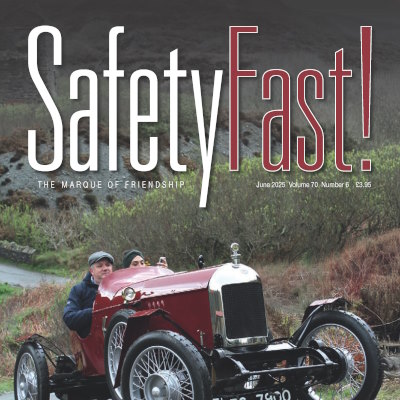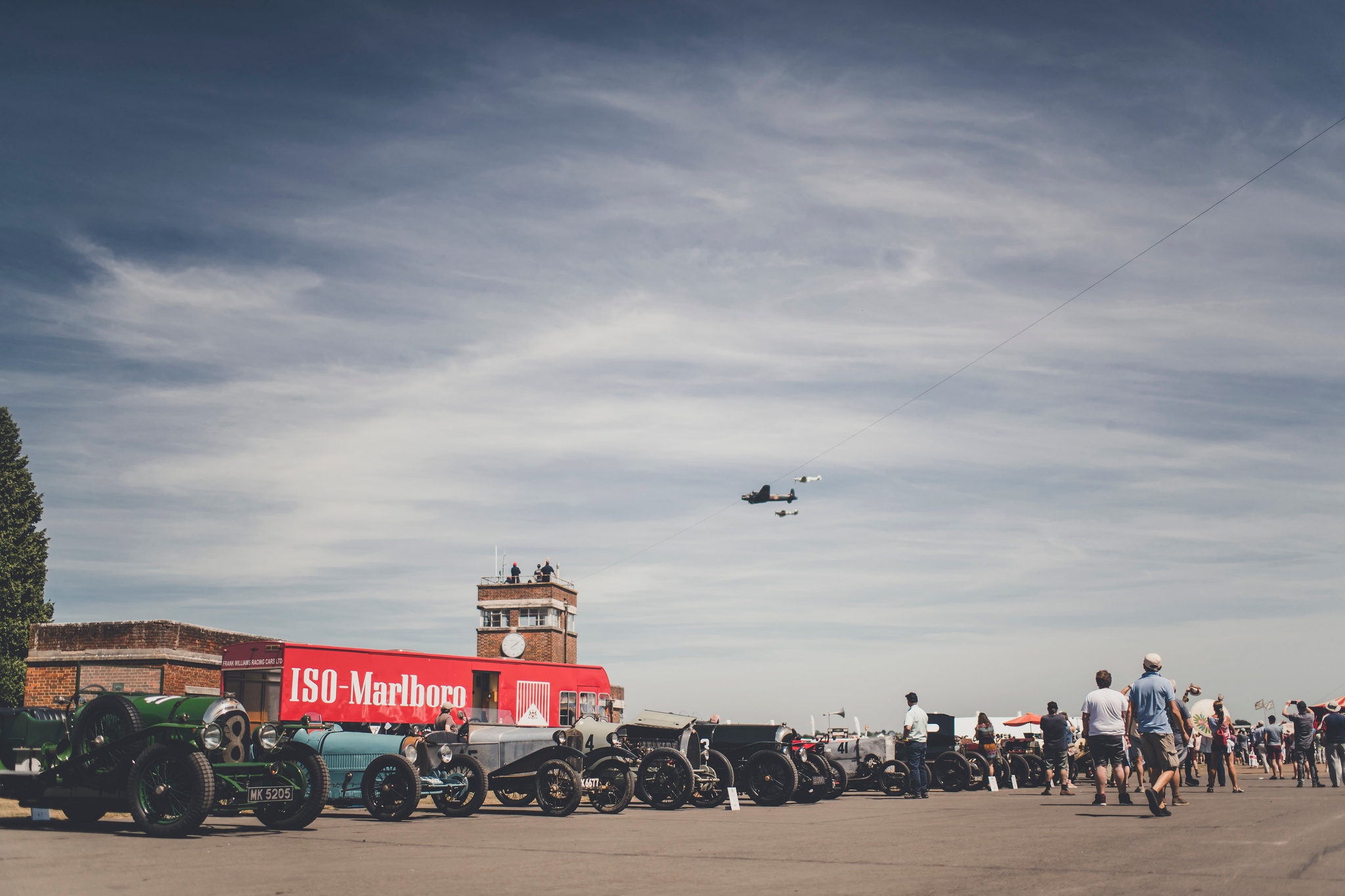Everyday Y
Reproduction in whole or in part of any article published on this website is prohibited without written permission of The MG Car Club.
By Ian Hopkins
I had always liked the look of pre-war cars, but did not have the bottle to actually purchase one. I had owned a MGB GT and after that a small VW Golf. When that became life expired I had to find a replacement. (Yes I know that there are a few differences between a Golf and a Y Type but I wanted a change.) I looked at several makes of post war car that were produced with ‘thirties’ styling.
The Citroen Light Fifteen had a certain appeal but was too expensive even in the ‘eighties’. The Rovers were nice but I couldn’t afford the petrol to run them. The same applied to the Triumph razor –edged saloons. I did, I have to admit, briefly look into owning a Triumph Mayflower. I was still a member of the MG Car Club when I saw piece in ‘Safety Fast!’ on the Y Type. Here was a post war car with the looks that I liked and it had an engine small enough for me to afford to run it.
I looked up the prices in ‘Practical Classics’ magazine and the prices were affordable as well. In August 1988 I contacted David Washbourne who owned one and he offered a test drive. Whilst he was full of enthusiasm for the car his wife explained the other side of owning one. Despite this I was hooked. David phoned some weeks later to see if I was still interested as he had been contacted by some one with a car for sale. I drove over to Merrow, near Guildford and viewed the car.
The lady who was selling the car explained that her husband had inherited several tea-chests of Austin Sevens and there wasn’t any room for the YB. Her eight year old son couldn’t understand why I would want to buy it! I had the car AA checked and bought the car the following week. It was very nearly the shortest time I owned a car. The drive from the estate went down a steep hill at the bottom of which was a T-junction. In theory you are supposed to stop at the white lines.
Indeed the Ford Sierra coming from the right expected me to. I am not quite sure how I missed it because I came to a halt on the grass verge opposite. The car was carefully driven round to a friend’s house where we found that it had managed to put almost the entire oil in the back axle into the rear brake drums. Once that was sorted and a few other little problems were solved, the car was then used for a daily commute between Kingston and Acton in London.
The car performed very well, keeping up with the London traffic. I did have a few entertaining moments like when the car filled with smoke one morning during the rush-hour. The slip-ring had disintegrated on the A 316 as I approached Richmond. Having pulled over I knocked the remaining pieces of bakelite off the steering column and rejoined the queue of cars into work.
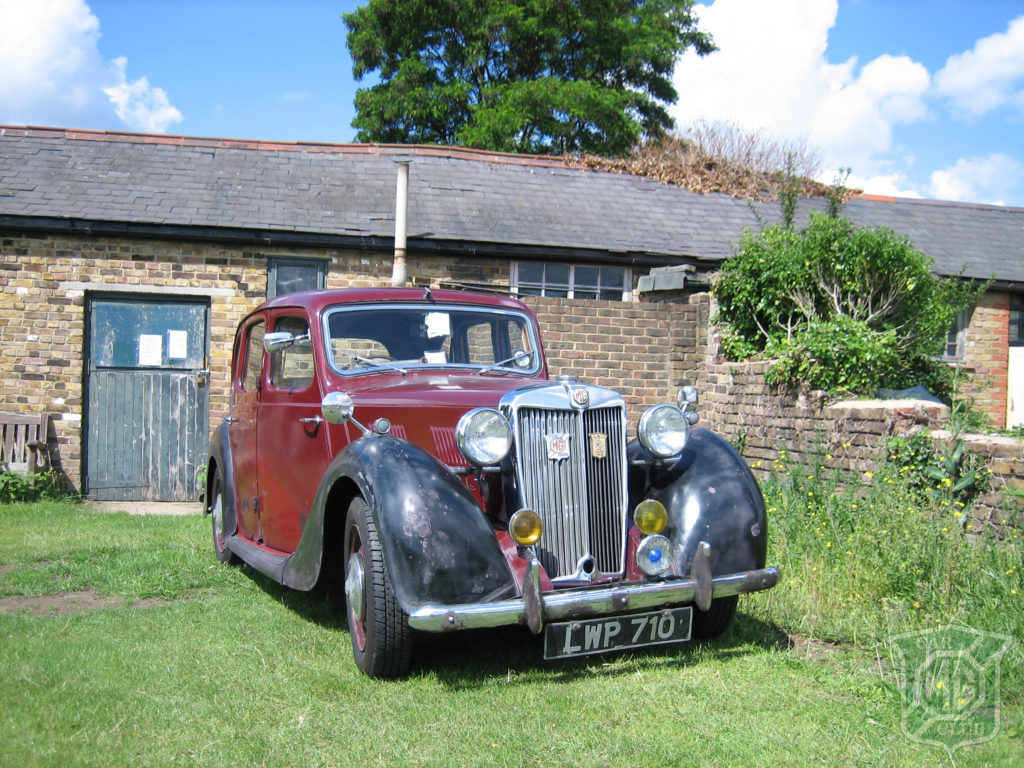
The indicators were connected to a switch on the dashboard and a button installed as well. This little bonfire put paid to the horn button and the indicator operating ring. This was the start of a series of small modifications that have been undertaken over the years. When I bought the car it already had flashing indicators, the front ones being a pair of yellow spot lights as 1950’s Bentley’s.
The rear ones being round Morris Minor ones. I restored the trafficators, but be warned they are not that visible to modern drivers, except at night when they glow nicely. If you can, have flashing indicators fitted for safety. (If you can, I would also get your classic re-wired to prevent the worry of any future bonfires.)
The Y Type register has a series of information sheets on ‘Y’ related subjects. One that is very useful is the one on fitting heat shields. These are very cheap to make, and helps prevent fuel vaporization as unleaded fuel burns hotter than the old four star fuel. Mine has been very useful. I have also fitted a return spring to the throttle linkage.
Not all upgrades are the result of system failures, as some happen through experience. As you can see the car is not exactly a concours winner. It has to work as my only vehicle. As a result I experiment with things every now and then. The ignition system has been tinkered with over the years. One of the difficulties of running a car with a dynamo and having to park it outside, often in another street, is the battery goes flat!
The dynamo has had several replacements, the last one being intended for a Land Rover. I know that I could have bought an extra battery and swapped it over on regular intervals. Well you try this on a wet Friday night when the car is parked several hundred yards from your house. Having to partly remove the bonnet to get at the battery box doesn’t help either. Eventually the AA got a bit bored jump starting the car, which usually waited until a cold February morning to fail.
The fitting of an alternator solved that problem. Also the distributor had become so worn that no matter how it was set it would wander about causing all sorts of running problems. The installation of electronic ignition was the cure to that little difficulty. The ignition now works wonderfully with the car running well and starting first or second pull. The upgraded electrics lead you on to other things of course.
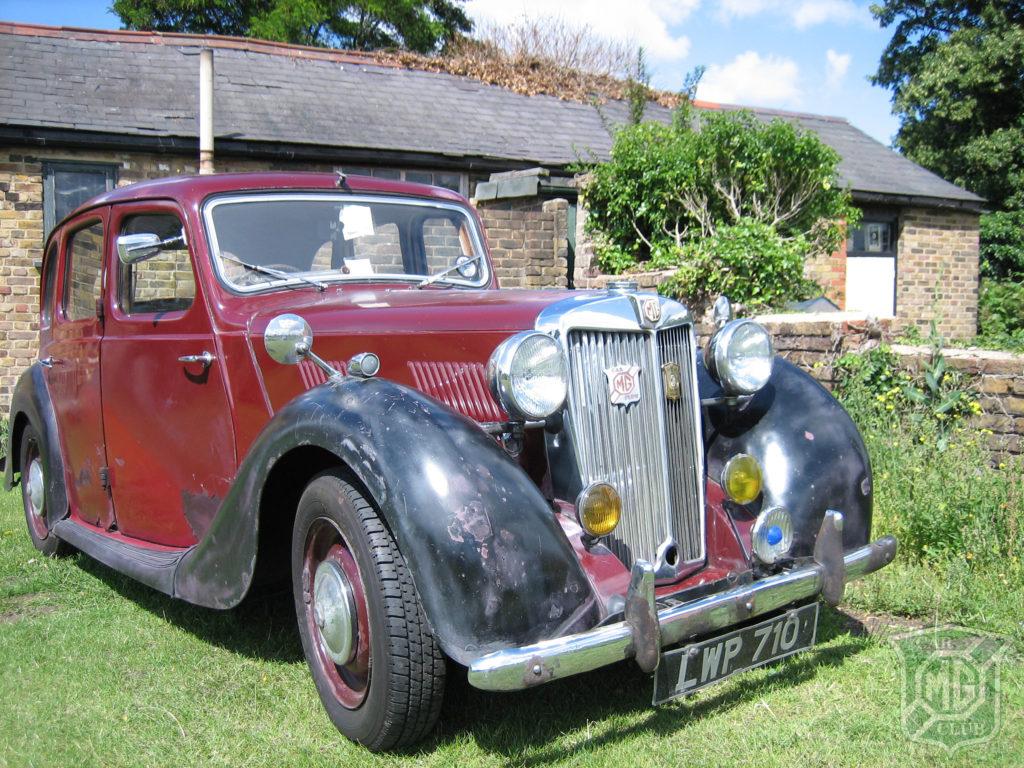
One December evening I was returning from seeing friends in Alton. During the meal it had begun to snow heavily. I soon found myself the lead car in a queue. The other drivers were only too happy to follow the tail lights of the car in front. Unfortunately for them my YB was the lead car. The shadow thrown by the Mondeo behind me totally obscured the light trying to emit from my feeble 42W main beam.
Every now and then I had to dip to 38W. Not only was the road white, but the verge was an indistinguishable white as well. Added to this, the triangles of snow squashed into the windscreen corners and centre by the wipers, were growing at an alarming rate. It was surprising how slow I had to drive before the cars were forced to overtake. The lights were soon fitted with Mini 40W/60W ones and I can now actually see the road in the dark.
It is all very well seeing of course, but being seen is just as important. I fitted a narrow High Visibility brake light in the rear window. (One of the long thin ones with lots of bulbs.) In wet weather, with the spray thrown up by cars a Y Type can become almost invisible on fast roads. These alterations should not detract from the car to much, but I have found it made it safer and easier to use. That is after all what the car is intended for.
The XPAG engine is very strong for its size and surprisingly reliable. Most people are astonished at how small it is, hiding under the air filter. When new or recently rebuilt the car is very sprightly and quite fleet of foot. The YB, with its smaller wheels climbs hills very well. The YA tends to be a little slower at this but its 16 inch wheels can give the edge on the level. However with increased wear and tear as the mileage grows the performance will eventually drop off. The engine needs a rebuild every eighty thousand miles or so. This will not be cheap. Mine has now covered sixty thousand and has lost that edge. On long journeys it will lose most of the oil as well.
I have found that the YB is still reasonably economical to drive. (Yes, I am one of those sad people who record their petrol and mileage every time they fill up!) I have been putting in £10 of fuel, about ten litres, and am getting a return of 37 miles in heavy traffic to 84 miles bumbling about at 30 to 40 mph. The car was running well when purchased for £2,200 in 1988. It briefly looked quite smart after a quick respray fifteen years ago. However, parking outside soon takes its toll on the paintwork.
A rough idea of the work done is given here:-
1988- 94775 miles. New regulator box & dynamo
1990- 5533 miles. Replacement speedometer cable. Two more since then.
1992- 13277 miles. Respray & rewire
1993- 22904 miles. New clutch & rear springs (it didn’t like speed humps)
1996- 50670 miles. Engine rebuild for unleaded fuel
2004- 84747 miles Electronic ignition fitted. & carburettor rebuilt. Back end of car rebuilt & replacement rear axle
2005-88749 miles. New water pump & starter motor
2006-89475 miles. Replacement radiator as original furred up & overheating
2007- Anybodies guess!
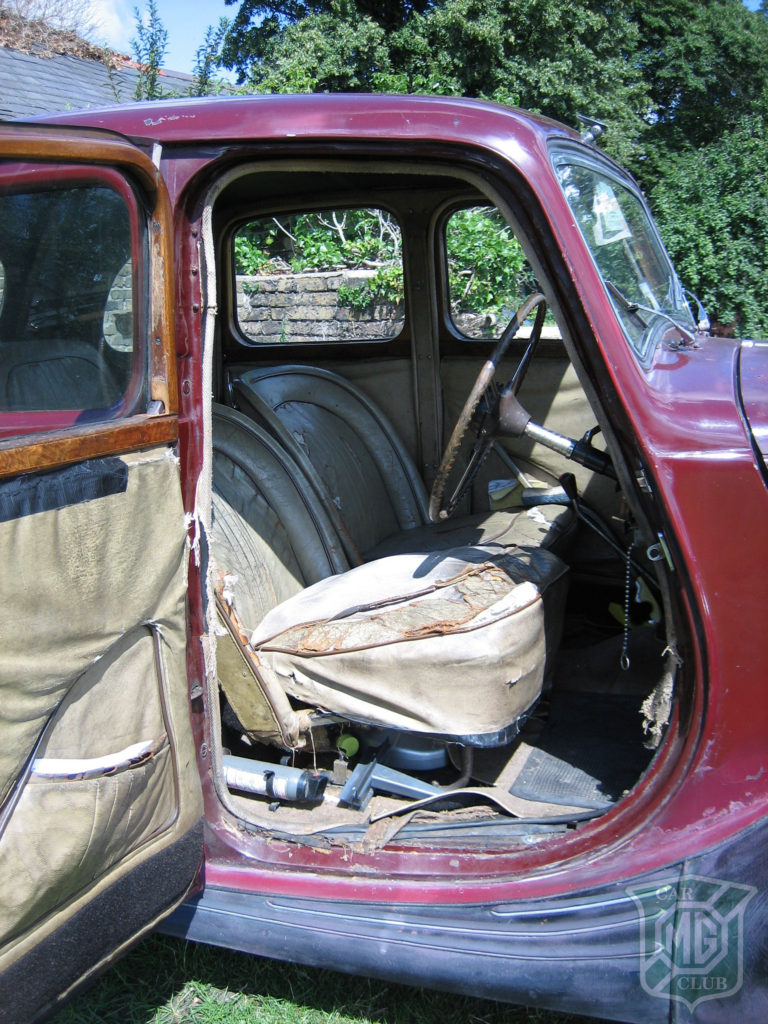
The car gets a service once a year when it is M.O.T. time. On average it costs about £300 per year on garage bills. The more you do yourself the cheaper it will be. I normally undertake all light day to day servicing. The front suspension needs a regular greasing however I must admit that the prop shaft universal joint’s are left to the garage. The rear seat has to be removed, and the cover plate with it’s strange pressing can be a bit of a pig to get back right, especially as the screws can only be tightened with an Allen Key.
Then you have tried to push a ton and a bit of car so that the grease nipples line up with the inspection hole. My YB has some other nifty little design features, like the oil filter. Mine is a bomb shaped one held in place with a long threaded rod. By undoing the retaining nut you can, with care, deposit the content all over your shoes. Peter Arnell has had his filter altered so that it takes the disposable cartridge type of filter.
Not standard, but easier to remove and better for the engine. He has also replaced the chicken wire filled drain pipe that is supposed to be an air filter, with a K & N ‘pancake’ one. My YB retains the original, which is fine for excluding leaves, twigs and small animals that may find their way into the engine bay. I occasionally soak this item in a bucket of paraffin to remove these items.
By the time this is published I would have completed my winter preparation. The car is placed on axle stands with the front wheels removed. Once the suspension has been cleaned with a stiff brush and greased, a carrier bag is put over the wheel hub. The undersides of the wings and running boards are cleaned and under seal is brushed on. It is best done early as leaving it as late as November means that the underseal has to be applied with a trowel because of the cold.
What little ploys do you need to drive a YB like mine. Whilst we are on the subject of cold. The one big difference between a modern car and 1950’s one is the internal temperature. In cold weather you can recognise a Y Type driver in a queue because he is the one wearing the coat and gloves. The sales reps. are in shirt sleeves. Yes mine has a heater, this being a device to circulate the cold air in the car.
In really cold weather you can remove your gloves and grip the heater pipes. (On the other hand the main aim of heater is to act as another radiator in hot weather. This allows the engine to be cooled by the simple expediency of becoming a heat exchanger, thus allowing the driver and passengers to dehydrate on long journeys. On one summer trip to Abingdon, the fire wall got so hot, the soul of one of my shoes became unglued.)
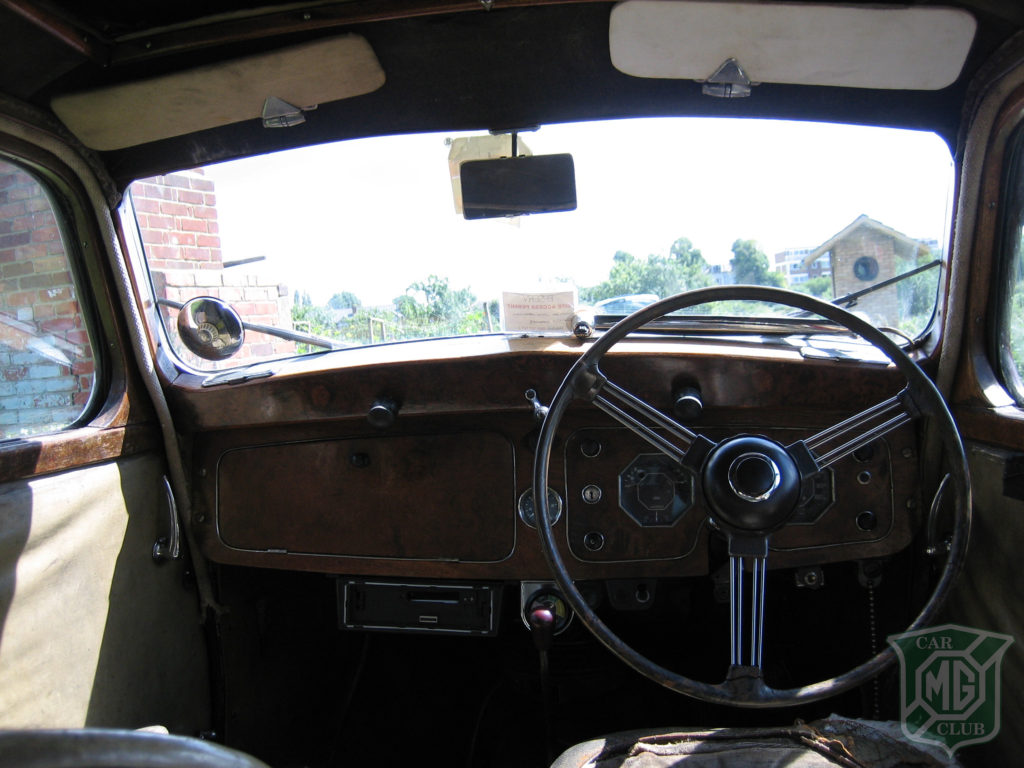
The car does have a tendency to mist up, usually because the car is a little damp inside. During heavy rain, water seeps through the top of the windscreen, where the hinges are located. If you have windscreen washers it also comes in through these if not properly sealed. In heavy persistent rain you will become familiar with ‘soggy –leg syndrome’, and all Y Types get this!
To overcome the misting up you can open the windscreen. This causes the internal temperature to drop further as you benefit from the gale and rain whipped up from the bonnet. An application of anti-mist spray does help here. I have used ‘Rain-x’ on the outside as this helps to ‘bead’ the rain making it clear off the windscreen quicker. I have found that it does smear in misty weather though. If you have the drivers door window open by one inch it does help to clear the inside of the car.
A couple of tips when driving Y’s. The engine is small, so give it plenty of welly before changing up a gear as this prevents the engine from struggling. Obviously you don’t ‘rev the nuts off it’. When putting the car into first or reverse, to help prevent crunching the gears, put the car into second before selecting these gears. I know this sounds weird, but it allows the engine and gearbox to catch up.
This should prevent embarrassing noises and damaged gear teeth as these gears don’t have a synchromesh. One other thing you will find is that if you are a tall driver, and pull up at traffic lights, do not pull up too close to the white line, as the shallow windscreen will prevent you from seeing the red light. This is quite important at major road junctions.
In actual fact, I have found theYB to be a joy to drive. The gearbox is nice and crisp and the steering is very positive, you just point the car and steer. I have found that it takes corners better than some modern cars. Remember the car was designed before the motorways were built.
It will happily cruise at 45 to 55 mph, so leave plenty of time for your journey. You will need to anticipate other drivers’ actions as the car decelerates or gathers momentum at rates different to modern cars. You can travel well on A or B roads now that the motorways take most traffic. Indeed I managed to arrive home before some friends once as there were road works on the M4.
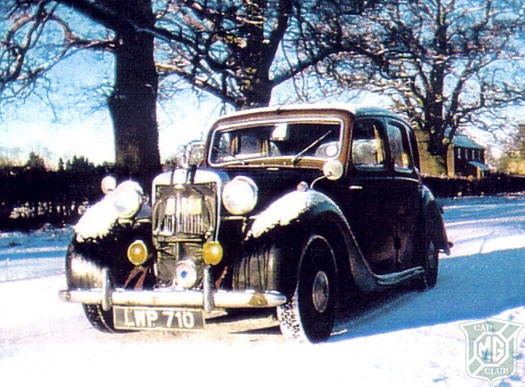
The car possesses all the styling of a classic British sports saloon. It handles well and has good looks. The driving position is a bit ‘sit-up-and-beg’ but the seats are comfortable and seem quite good for my posture! The car is great fun to drive and you do get a lot of admiring looks, even in its current condition. Not only that, but you get to hold up caravans too!

 MG Car Club
MG Car Club